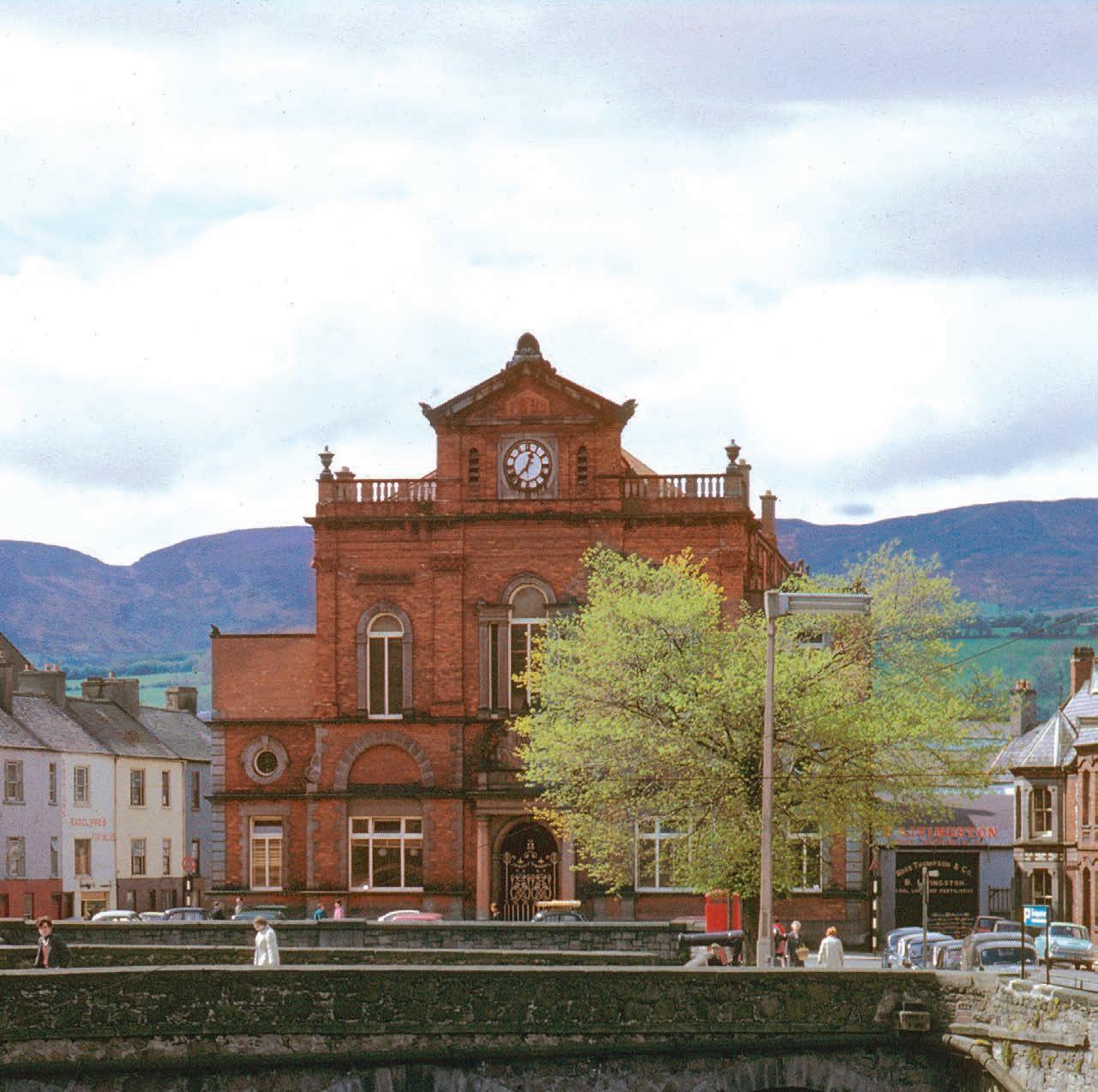
all politics cover.indd 1 24/02/2015 14:03


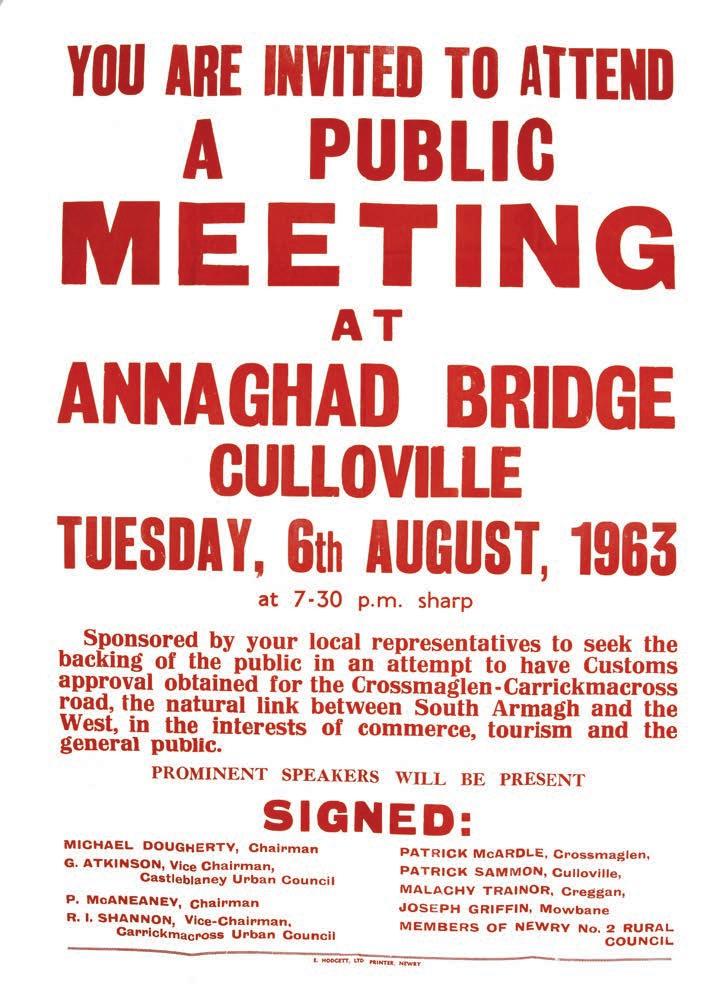
all politics cover.indd 2 24/02/2015 14:03
Réamhrá an Mhéara
Téann an leabhrán seo le taispeántas a chíorann na príomhchéimeanna forbartha a d’imir tionchar ar fhás an rialtais áitiúil ar an Iúr, in Ard Mhacha theas agus i ndeisceart an Dúin.
Pléann an leabhrán seo le bunú Coimisinéirí na bPóiliní ar an Iúr sa bhliain 1828, teacht Coimisinéirí an Bhaile in 1865, tabhairt isteach na gComhairlí, tuathcheantair is ceantair uirbeacha, sna 1890í, Comhairle an Iúir agus Mhúrn sa bhliain 1973 agus Athstruchtúrú an Rialtais Áitiúil in 2015.
Scríobh lear mór daoine, idir fheidhmeannaigh is Chomhairleoirí, ailt don leabhrán ina dtugann siad tuairimí pearsanta ar an bhorradh a tháinig ar rialtas áitiúil ó lár an 19ú haois go dtí an lá atá inniu ann.
Ba mhaith liom mo bhuíochas a thabhairt d’achan duine a raibh baint acu leis an taispeántas, foireann na hIarsmalainne go mór mór agus na daoine aonartha a bhronn agus a thug earraí ar iasacht don taispeántas chomh maith leo siúd a raibh ceird na scríbhneoireachta acu.
An Comhairleoir Dáire Hughes
Méara, Comhairle an Iúir agus Mhúrn
Mayor’s Foreword
This booklet accompanies an exhibition which examines the major phases of local government development in Newry, south Armagh and south Down.
It commences with the establishment of the Newry Police Commissioners in 1828, the Town Commissioners in 1865, the introduction of Urban and Rural District Councils in the 1890s, the setting up of Newry and Mourne District Council in 1973 to the reorganisation of local government in 2015.
A range of people who worked as officials, or served as Councillors, have contributed articles to the booklet, providing a personal insight and perspective on the development of local government. These articles cover a period from the mid - 19th century until the present day.
I would like to thank everyone involved in this exhibition, particularly Museum staff and individuals who have donated and loaned items to the exhibition, and to those who contributed articles to this booklet.
Councillor Daire Hughes
Mayor, Newry and Mourne District Council
Introduction
As Newry and Mourne District Council comes to an end in March 2015, it is timely to look back at local government in the area over the last two hundred years.
Newry was one of the first towns in Ireland to implement a system of local government. In 1828 twenty one Commissioners of Police were established and in 1865 they were replaced by Town Commissioners as a result of the 1865 the Towns’ Improvement (Ireland) Act.
The Town Commissioners were dissolved in 1898 when a Local Government Act introduced a new structure comprising County Councils, Urban and Rural Councils.
In contrast to earlier forms of local government, the new Councils had publicly elected representatives known as Councillors.
County Councils were responsible for each County and had responsibility for roads, setting the rates, and a host of other functions. Urban and Rural Councils were responsible for smaller areas and had a variety of functions including registration of births and deaths in the area. Until the introduction of the Health Act of 1946 and the National Health Service of 1948, Rural Councils also served as Poor Law Guardians.
For a short time in the late 1920s Newry Urban District Council was responsible for the provision of electricity. Other diverse responsibilities included the censoring of films in the local cinemas and the management of the local library.
Throughout the lifetime of the Council, housing was often a contentious issue. After the Second World War a large number of housing schemes came to fruition, including Drumalane Park (1951 - 1954), O’Neill Avenue (1956 - 1957) and Derrybeg (1963 - 1964). The Labour Party on the Council was one of driving forces behind these schemes.
The process of major reform of local government started in the mid-1960s. In 1966 a review was launched of local Councils in Northern Ireland, which were described, ‘as too many, too small, and too poora motley inheritance from the 19th century’. Ultimately, this led to the Macrory Report of 1970 that advocated a major overhaul with 26 district councils replacing the existing structures. Against the backdrop of reform, the political situation in Northern Ireland had dramatically deteriorated, and Direct Rule from Westminister was introduced in 1972. In the same year, the Local Government (NI) Act brought in the system of 26 Councils. This reform was led by officials, and had little input from local politicians.
Prior to 1973 there were six smaller Councils in this area, these were; Newry Urban District Council, Newry No. 1 District Council (Co. Down side), Newry No. 2 District Council (Co. Armagh side), Warrenpoint Urban District Council, Kilkeel (South Down) Rural District Council and Kilkeel Urban District Council. These were replaced by Newry and Mourne District Council which had its administrative offices at Monaghan Row, Newry.
Newry Fire Brigade pictured outside Newry Town Hall c.1914
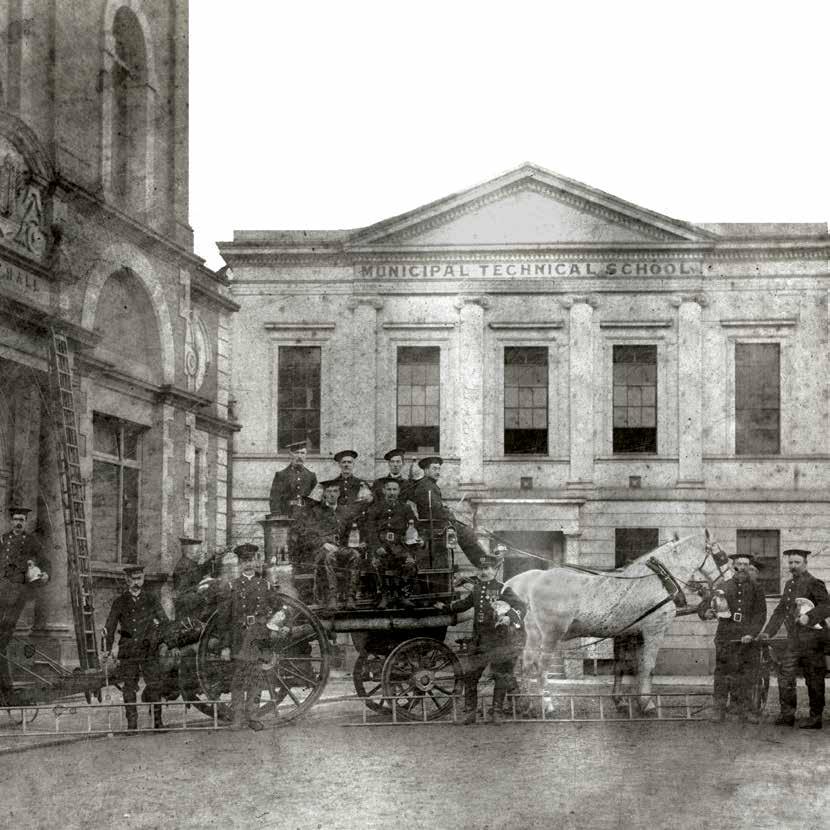
Newry Urban District Council was one of the first authorities to provide a fire service. It was a voluntary brigade formed by young businessmen of the town. Equipment was kept in the Town Hall and when a fire broke out in the town, a bell was rung by the caretaker to alert the fire brigade.
Newry and Mourne Museum Collection
Detail from map of local councils in County Down c.1930, showing part of Newry Urban District Council, Newry No. 1 District Council, Warrenpoint Urban District Council, Kilkeel Rural District Council and Kilkeel Urban District Council.
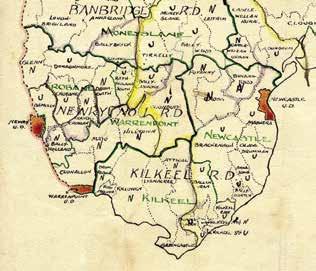
Newry
Proposals for a planning scheme in Newry in 1946, incorporating housing, roads and open spaces. It mentions a possible location for a swimming pool, laments the lack of a public space in the centre and suggests Castle Street should be widened to accommodate traffic.

Newry and Mourne Museum Collection
Street Sign
Newry Urban District Council introduced a number of bilingual street names in the 1950s, including Michael Mallin Park and James Connolly Park. Some streets were also renamed at this time; King Street became Francis Street and Queen Street became Dominic Street.
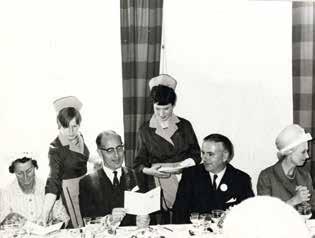
Newry and Mourne Museum Collection
 and Mourne Museum Collection
Captain Terence O’Neill Prime Minister of Northern Ireland is pictured (left) with W.V. Hogg Chairman of Newry Urban District Council (right) and Jean O’Neill (extreme right) at a luncheon held in their honour in the Ardmore Hotel, Newry during a visit to the town in May 1967. Newry and Mourne Museum Collection
and Mourne Museum Collection
Captain Terence O’Neill Prime Minister of Northern Ireland is pictured (left) with W.V. Hogg Chairman of Newry Urban District Council (right) and Jean O’Neill (extreme right) at a luncheon held in their honour in the Ardmore Hotel, Newry during a visit to the town in May 1967. Newry and Mourne Museum Collection
The
Police and Town Commissioners in Newry Dympna Tumilty
In 1828 “An Act for the lighting, watching, and cleansing of cities, towns corporate, and market towns in Ireland” was established. This Act originated in Newry, where it was first implemented, and Newry became a model for municipal administration throughout Ireland.
Twenty one Commissioners of Police were chosen to implement this Act. The Commissioners employed eleven officers called the Town Watch and paid their salaries from local taxes. The duties of the Town Watch included patrolling the town, lighting street lamps every evening and keeping the streets clean and free from obstruction. They also dealt with minor crimes and disorderly behaviour.
On 6th February 1865 the Towns’ Improvement (Ireland) Act was adopted. The Board of Police Commissioners were dissolved and eighteen Town Commissioners were appointed in their place. Newry was divided into three wards, north, south and west, and the first Chairman was John Moore.
Over the next number of years, the Town Commissioners turned their attention to improving the poor sanitation in Newry through the construction of sewers and introducing health regulations for public places, shops and workplaces. These measures taken to tackle disease were very successful, with the number of reported cases of fever falling from 238 in 1864 to 48 in 1868.
In the early 1870s the next major challenge to face the Town Commissioners was that of the supply of water to the town. Newry had around 200 wells but the water from some of them was not fit for human consumption. The Town Commissioners, along with Bessbrook Spinning Company, began negotiations and put forward a Bill to promote Camlough as an ideal location for a reservoir. In the House of Lords, two days were spent on the Bill when John James O’Hagan argued Newry’s case for ten hours. The Bill was passed and became law on 14th August 1871 as the Newry Improvement and Water Act.
The introduction of this Act saw many responsibilities given to the Commissioners, specifically maintaining and building public roads, bridges and other public works, and also, the control of six marketplaces. For the first time the Commissioners were given an official seal.
One of the last acts undertaken by the Town Commissioners was the construction of the Town Hall which is situated on the Clanrye River, the old county border. Work was completed in 1893.
The Town Commissioners were dissolved in 1898 when a new Local Government Act was introduced and local Councils were established.
 John James O’Hagan Chairman of the Newry Town Commissioners in 1868. At the time of his death in 1895, all boats in Newry flew their flags at half mast. Newry and Mourne Museum Collection
John James O’Hagan Chairman of the Newry Town Commissioners in 1868. At the time of his death in 1895, all boats in Newry flew their flags at half mast. Newry and Mourne Museum Collection
Local government mortgages and leases in Newry and Mourne Museum Collection
Robert Whan
At the end of 2011, the Museum received a bundle of leases from the Council offices at Monaghan Row, Newry. These have now been catalogued and are available for researchers and members of the public to view at the Museum. The 340 leases, and in some cases related correspondence, cover the period between the 1870s and early 1970s. They were granted by Newry Town Commissioners and, after 1898, their successors, Newry Urban District Council.


As a collection they offer an insight into the remit of local government, addressing water supply, the markets, sewerage, trams and the railway, the telephone network, electricity, street lighting and housing. They will also be of interest to those tracing their ancestors with potential insights into the activities of local professional and business people.
There are agreements relating to the purchase of the Newry Water Works Company by the Town Commissioners, to building work carried out at the Gas Works and in connection with Newry markets, as well as the Commissioners’ contracts with David Mahood for the construction of Newry Town Hall (1892) and the bridge on which it is sited (1890).
Pinchin, before the First World War. There are also later agreements with local football clubs, including Rockview Rangers, Shamrock Rovers, Windmill Stars, and the Carnbane & District Football League, for provision of playing fields or other facilities.
Although the bulk of the material relates to Newry, there are seven agreements connected with Annalong Harbour, 1888–1946, and two registers of mortgages for Kilkeel Rural District Council, 1904–1973. The collection also includes documentation for the building of the first Urban Council houses in Ireland, which were built in Erskine Street, Newry, in 1900.
Robert Hogg Doherty served as Town Clerk in Newry from 1868 to 1908 under the Town Commissioners and Newry Urban District Council. The Town Clerk was the principal official in local government, and was the precursor to the modern Chief Executive of Council. Newry and Mourne Museum Collection
Recreational amenities also feature, with a series of documents relating to the first cinema in Newry, opened in Canal Street by an Englishman, R. B.
 A selection of the mortgages and leases in the Collection. Newry and Mourne Museum
A selection of the mortgages and leases in the Collection. Newry and Mourne Museum
Newry Urban District Council and
the 1922 Dissolution
Shane McGivern
Following the Irish War of Independence (1919 - 1921) a truce was agreed in July 1921, which eventually allowed negotiations to take place between the Dáil and Westminster leading to the Anglo-Irish Treaty of 1921 and the creation of Northern Ireland and the Irish Free State.
Newry Urban District Council intended becoming part of the new Irish Free State. On 19th December 1921 a motion was passed, “That we, the Urban District Council of Newry, refuse to recognise the authority of the Northern Parliament and pledge our allegiance to An Dáil Éireann”. Newry Urban District Council was not alone in its views; Newry Board of Guardians, Newry No.1 and No.2 Rural District Councils, Warrenpoint Urban District Council, Kilkeel Rural District Council and Board of Guardians, Downpatrick Rural District Council and Keady Urban District Council all openly refused to recognise the authority of the Belfast Parliament.
Patrick Lavery was elected the first Sinn Féin Chairman of Newry Urban Council in January 1922. Mr. Lavery represented the Council at Dublin City Hall where he met with President Arthur Griffith and Michael Collins and assurances were given that northern Nationalists would not be let down.

Constabulary and the Council was dissolved under special orders extending from the Local Government Act, 1921. Major James Hanna McCormick was appointed as Commissioner to perform the duties of the Council. One of McCormick’s first acts was to rescind the resolutions of the Newry Urban District Council which had repudiated the authority of the Government of Northern Ireland. This commissioner continued in power until January 1923.
The Council continued to ignore circulars sent from the Belfast Parliament. This changed on Saturday 22nd April 1922 when the Town Hall was occupied by the Special
William Cronin, Town Clerk of Newry Urban District Council from 1908 –1947, had an unsurpassed knowledge of local government procedures and legislation. He served on a multitude of public bodies, and was awarded an M.B.E for services to local government. Cronin Park in Newry is named after him.
Newry and Mourne Museum Collection
In January 1923 nominations took place for the newly reinstated Newry Urban District Council. As no more candidates than the full complement of the 18 seats had been put forward, no election was held. Sinn Féin refused to put candidates forward as they saw it as the best policy to ignore the Belfast Parliament. A policy which was to continue until the 1985 Council elections. The result was 12 Anti-Partitionists and 6 Partitionists being returned. At the inaugural meeting of the new Council, the anti-Partitionist Chairman and Vice-Chairman passed a resolution stating, that “the vast majority of the inhabitants of Newry are strongly opposed to the partition of Ireland, and they desire to be relieved at the earliest possible date from the authority of the Belfast Partition Parliament”.
The majority of the newly elected Urban Council opposed Partition and hoped that that the Boundary Commission would ensure their eventual transfer into the Irish Free State. The Commission concluded in 1925 without any changes being made to the border.
 Hugh John McConville, Chairman of Newry Urban District Council from 1909 – 1922 and from 1929 – 1937. Painted in 1937 by Frank McKelvey. Newry and Mourne District Council
Hugh John McConville, Chairman of Newry Urban District Council from 1909 – 1922 and from 1929 – 1937. Painted in 1937 by Frank McKelvey. Newry and Mourne District Council
Fifty years in Local Government Jack Patterson
Most of my life has been spent in local government, as a worker and later on as a Councillor.
I started work with Newry Urban District Council as a bricklayer in March 1964, and a few years later I was appointed Assistant Town Inspector. The Clerk of Council was Gerald Cronin and after my appointment was approved at a Council meeting, he sent for me and gave me some useful advice, he said ‘deal with the facts; don’t listen to what is hearsay’.
In my new job, I was based in the Council Depot in Francis Street and one of my first duties was to investigate a complaint about animals being kept in a house. When I visited I found that a donkey was being kept in the living room.
Newry Urban District Council staff at tea in the Town Hall Pictured, left to right, Maura Turley (née McKeown), Clerk and Shorthand Typist, Mary (Maisie) Keenan, Clerical Assistant, Gerald Cronin (Town Clerk) and Maureen Daly, Administrative Assistant. Newry and Mourne Museum Collection

I remember Charles Blayney, the former Town Surveyor who worked from 1902 – 1959 in Council. After he officially retired, he continued to measure the monthly rainfall and I had to go every month to his house to collect his recordings. There was also Margaret Barry who worked from 1909 – 1970 as a filing clerk in the Town Hall until she retired at 79. However, it was the custom for women to leave their job in Council when they got married.
The Urban Council had wide responsibilities ranging from water supplies, repairing the roads to street lighting. These functions were removed from Council control in 1973. Many Urban Council workers were relocated to the new departments such as the Housing Executive and Water Service. Other staff, in particular the refuse workers, were transferred to Newry and Mourne District Council.

For the first three or four months there was some confusion in the new Council, for example a refuse
crew went out from Newry to south Armagh, and ended up somewhere near Castleblayney. I got a call saying, ‘there is one of your lorries in County Monaghan emptying bins’.
The Troubles impacted on both the old and the new Council. I actually had three cars blown up, and when bin lorries were hijacked or burnt, it was a scramble to find and adapt replacement lorries to empty bins.
I took early retirement in 1993, and it was suggested that I stand as an Independent Councillor, which I did and was elected as a Newry Town Councillor. One of the major highlights of my career was in 2003 when I became the first elected Mayor of Council, after Newry was awarded City status in 2002. It was a very busy year and I attended 650 functions.
It is ironic to think that some functions that were removed from Councils in 1973, are now coming back to Council in 2015.
Councillors for Newry and Mourne District Council at their first meeting after the local government elections in May 1977. The female Councillors are Anne Marie Cunningham, Nan Sands and Violette Cromie. Courtesy of The Outlook
Memories of Newry Urban District Council
John Murphy
I started work with Newry Urban District Council in 1967, and then transferred to the finance department of Newry and Mourne District Council in 1973, and I have been there ever since.
The period 1967 – 1973 was traumatic due to the outbreak of the ‘Troubles’. My early recollection of that time was the ‘rent and rates’ strike, when Nationalist politicians encouraged people to refrain from paying, as a form of protest against what was taking place at Stormont. It got to a stage where Newry U. D. Council was suspended and replaced with Commissioners, who were senior Civil Servants from Stormont.
The Council was based in the Town Hall in Newry. In the Town Clerk’s Office there was Gerald Cronin, the Clerk, and Joseph Morgan, the Assistant Clerk, whose duties also included finance, and I worked closely with him. There were three ladies, two full-time and one part-time, who looked after the administration and minutes of Council meetings and agendas. There was also a Rent Office, a Rates Office and a Town Surveyor’s department.
The Council Yard was in Francis Street, where the staff who maintained the roads, street lighting, refuse and street cleaning, water and sewerage were based.
party and Official Unionists and a few Independents. The Councillors were people from all walks of life. All meetings took place in the evening as most Councillors worked during the day. Councillors gave their time on a voluntary basis, and were not reimbursed. There were some great characters in Council, including Councillor Tommy Markey, who led the Newry Labour Party and Councillor Tommy McGrath who was chief spokesman for the Irish Labour Party. The latter was also a member of the Gas Committee. These two men were keen political adversaries.
The Council had responsibility for the Gas Works, as well as the Market. I remember the Market as very vibrant in those days, with a lot of stallholders, but the ‘Troubles’ affected trade, and over the years the Market became less busy.
Council also managed the swimming pool in Clanrye Avenue, but in those days recreation was a low priority. It was only later in the Newry and Mourne District Council era that recreation became more important, due to the grants available from Stormont. The new Council employed a Recreation Officer, Raymond Turley, and today, the district is dotted with playing fields, sport facilities and community centres that in many ways helped the community through the dark days of the ‘Troubles’.
Council meetings took place in the Boardroom of the Town Hall. There were about 22 Councillors, comprising the Newry Labour Party, Irish Labour
A front view of Newry Gasworks
The Gasworks closed in 1987 after 165 years of operation. Originally in private ownership, it was later owned by the Town Commissioners and then Newry Urban District Council. It was phased out by Newry and Mourne District Council due to decreasing demand from local consumers.
Newry and Mourne Museum Collection

Memories of Newry No. 1 & 2
Rural District Councils
Kevin O’Neill
I started work in 1962 as a junior clerk for Newry No. 1 Rural District Council (Co. Down side) and Newry No. 2 Rural District Council (Co. Armagh side). Both Councils shared the same Clerk and administrative staff, but had separate professional staff such as engineers and architects. The Clerk, W.B. O’Donoghue, was from Forkhill and had served in the First World War. The administrative capital for both Councils was at Monaghan Row, adjacent to Daisy Hill Hospital, reflecting the former association of local government with the Board of Guardians.
No. 1 R.D. Council comprised seventeen Councillors and No. 2 R.D. Council comprised nineteen Councillors. At that time the Councillors reflected the rural nature of the Councils, and were farmers, merchants and auctioneers. Most Councillors were Independent, and not party political, and usually had a ‘standing’ or prominence in the community, which was important for election.
Councillors that stand out from this period include Malachy Trainor who was always lobbying to get more houses built in Creggan, south Armagh. In the 1960s both Councils were heavily involved in building houses.
for Newry No. 1 R.D. Council, while Nicholas O’Dywer and Partners were the consulting engineers for No. 2 R.D. Council. J. L. O’Hagan & Co. were the architects for No.1. The Council resident engineer for No. 1 was William Ellison and for No. 2 Peter McMahon. Danny McRandal was the architect for all the housing in No. 2 Council. Other officials that spring to mind, include Hugh Townson, No.2 R.D. Council Public Health Inspector, who commented on the changeover to the larger Council in 1973; “Absolute mistake moving citizens further from seat of power, in England we had Parish Councils, bigger is not always better”.
The Rural Councils also had responsibility for water, sewerage, housing and public health, and the staff and consultants employed reflected these diverse functions. In the 1960s Major Reside was the consulting engineer
 Letter from John Oliver to Paddy O’Hagan accepting an invitation to Mr. W.B. O’Donoghue’s retirement dinner in September 1967. John Oliver was a distinguished Civil Servant who masterminded the beginnings of local government reform in the mid-1960s. Newry and Mourne Museum Collection
Letter from John Oliver to Paddy O’Hagan accepting an invitation to Mr. W.B. O’Donoghue’s retirement dinner in September 1967. John Oliver was a distinguished Civil Servant who masterminded the beginnings of local government reform in the mid-1960s. Newry and Mourne Museum Collection
The review of local government in 1973 saw the absorption of the Newry Rural District Councils into Newry and Mourne District Council. The new Council was more party political than the former Councils. Its first Chairman was John McAteer (Independent) from Ballyholland. There were also more sub-meetings because of this; the calibre of Councillor also changed, and there was a Unionist-Nationalist divide. In the old Council system, meetings were held at 1pm; in the new Council meetings were now held in the evenings. Electoral voting also changed, with the single transferable vote system introduced.
The first Clerk of Newry and Mourne District Council was Paddy O’Hagan from Hilltown, and after he retired, I became Clerk and occupied that position from 1988 - 1999.
 Hugh Brooks, a farmer from Jerrettspass, was a Councillor on Newry No. 1. Rural District Council for the Glen Division and served as Chairman from the 1950s until 1964. He also served as a Councillor on Down County Council.
Courtesy of Catherine Brooks
Hugh Brooks, a farmer from Jerrettspass, was a Councillor on Newry No. 1. Rural District Council for the Glen Division and served as Chairman from the 1950s until 1964. He also served as a Councillor on Down County Council.
Courtesy of Catherine Brooks
Memories of Warrenpoint
Urban District Council
 Jim McCart
Jim McCart
I had an early interest in politics and joined the Irish Labour Party when it was first established in Warrenpoint in 1945. I became a Councillor with Warrenpoint U. D. Council in 1964 and was the last elected Chairman of that Council.
At that time the Clerk was Noel Slattery, who was followed by Paul Higgins. After he left in 1970, the Ministry of Development would not sanction a new appointment and insisted that we share the Clerk with Newry Urban Council. At that time Gerald Cronin was Clerk, and he brought some of his staff to Warrenpoint including the Finance Officer, Joseph Morgan and Maureen Daly who was the Clerk’s personal assistant. I remember commenting at the time, that the sharing of the Clerk with Newry, was the start of amalgamation of Councils.
The Council met in Warrenpoint Town Hall and there were twelve Councillors, who came from a variety of backgrounds, from shopkeepers, factory workers, building trade to boarding house owners. There were two electoral Wards in the town, the East Ward which was represented by five Unionist Councillors, and the West Ward by seven Nationalists.
Small Urban Councils like Warrenpoint had a lot of power, but no money. I remember that there were a number of improvement schemes that needed to be done, but while government grants were available, finding the Council share of expenditure was virtually impossible. This was due to the small amount of rates that could be raised, as there were only about 3,000 people in Warrenpoint in the mid-1960s.
The late 1960s and early 1970s was a turbulent time for local government, with some Councils only meeting intermittently. This was exacerbated by the events of Bloody Sunday in 1972. Warrenpoint U.D. Council did not meet and we received a letter technically removing us from office. A Commissioner was brought in to run the Council, and ten months later we had the elections for the new Newry and Mourne District Council.
I stood in the election for the new Council and topped the poll. I served in the new Council until I retired in 2001.
At that time, being a Councillor was a part-time role, with only two or three meetings each month. These took place at 7pm, which reflected the working life of Councillors. It was an unpaid position, with very little in the way of out-of-pocket expenses even for the Chairman of Council.
Seal of Warrenpoint Urban District Council Newry and Mourne Museum Collection
Warrenpoint Swimming Baths
Built by Warrenpoint Urban District Council, the Baths were opened on 8th June 1908, and were the first of their kind in Ireland.

 Newry and Mourne Museum Collection
Newry and Mourne Museum Collection
Former Clerk of Kilkeel Rural District (South
Down) Council
Desmond Egan
Originally from Newcastle, I started work with Kilkeel R.D. Council in 1947 as a Clerical Assistant. I was promoted to Assistant Clerk in 1952 and became Clerk in 1954, and held this post until the reorganisation of local councils in 1973. I was then transferred to the Department of Environment as a Development Officer in the Roads Service, and retired in 1983.
When I started work with Kilkeel R.D. Council, office staff comprised the Clerk and a clerical assistant. Women began to be employed at a later date and were allowed to remain in Council employment after marriage. A part-time rent collector was also employed prior to 1947 but eventually became full-time as Council housing development increased. Later, a second rent collector was also employed. There were also cleaners and “outside” staff. An engineer, solicitor, architect and planner (although the Council did not have any planning functions) were employed on a consultancy basis.
In 1947 Kilkeel R.D. Council staff were based in the old workhouse building in Kilkeel which they shared with staff from Mourne Hospital. The council area included Rostrevor and extended to Maghera, Bryansford, Dundrum and to near Hilltown. The total population of that area around that time was around 14,000.
There was a relationship between the County Council and the R.D. Council with regard to maintenance of unclassified roads. Farming issues were the responsibility of the Ministry (later the Department) of Agriculture. The County Council was also responsible for the collection of rates and the setting of the Regional Rate. The R.D. Council prepared and submitted to the County Council financial estimates and these together with government grants from central government were used to set the District Rate.
The RDC met with the County Surveyor from the County Council twice a year (called the Half Yearly Meeting) at 2.00 pm before the main RDC meeting at 3.00 pm. All business had to be concluded inside one hour.
There were twenty Councillors on Kilkeel R.D. Council, seventeen of which were elected and three were co-opted. The Chairman of the Council was from the majority party and the post of Vice Chairman was shared between parties. In the Urban Council Unionists refused to share the post of Vice Chairman with Nationalists as the voting margins were so narrow. Most of the Councillors were from a farming background. There was one female Councillor, Miss Gibney from Annalong. The R.D. Council met on the second Thursday of each month at 3.00 pm. Meetings could last into the evening. Councillors were not paid but were later given an allowance.
Prior to the abolition of the Board of Guardians in 1948, both Rural and Urban Councillors sat on the Board to administer the Poor Law Rate.
The main functions of the R.D. Council were management of water, sewerage and housing. The County Council looked after the roads and planning.
Council employees were allowed to stay with the Council until old age as were Councillors. John Tinnelly, from Rostrevor, became a Councillor with Kilkeel R.D. Council in 1929 and was still a Councillor in 1973. He went on to be a Councillor with Newry and Mourne District Council for a number of years.
When I joined Kilkeel R.D. Council in 1947, the Council had 222 council or labourers’ cottages. By 1973, the Council had 800 houses under its charge. This necessitated the recruitment of a second rent collector. In 1947 an engineer, Hugh McAleenan, was employed on a part-time consultancy basis. As the workload increased a full-time engineer was recruited, a Mr Finnegan, who had worked with Newry and other local councils. Mr McAleenan continued to be employed part-time.
The name change from Kilkeel Rural District Council to South Down Rural District Council, in 1966, was part of the beginning of the reorganisation of local government by Stormont which culminated in 1973 with fewer and larger councils.
When Kilkeel R.D. Council was dissolved in 1973, all staff were transferred to other posts either in the Civil Service, Newry and Mourne District Council or in Down District Council. Noel Houston who was in charge of Finance in South Down R.D. Council went to Newry and Mourne District Council. The Assistant Clerk, Kevin McKnight from Kilkeel, went to work in the Housing Executive and later moved to Down District Council.
 Councillor John Tinnelly (first left) and Desmond Egan (first right), Clerk of South Down Rural District Council, in March 1969. © The Outlook
Councillor John Tinnelly (first left) and Desmond Egan (first right), Clerk of South Down Rural District Council, in March 1969. © The Outlook
Former Councillor with Kilkeel
Urban Council
Cyril E. Stevenson
I was a Councillor for about five to seven years up to 1973 and represented the Official Unionist Party. Council business was predominantly quiet. The Council had a Unionist majority and relations between Councillors were good.
The main issue facing Kilkeel Urban District Council in the 1960s was the provision of housing. More people wanted to come and live in Kilkeel and the town has doubled in size in the last forty years. Building work was put out to tender with McMullans being the contractors. Among the new Council developments was Harbour Drive which was opened on 24th May 1960.
Notable events during my time as a Councillor included a visit in May 1970 by Lord Grey of Naunton, Governor of Northern Ireland, for the opening of a new road at Shore Bank, Kilkeel. Willie John McBride, the Ireland rugby player, also made a memorable visit to Kilkeel.

The Council was based in an office near the Masonic Hall in Greencastle Street. Meetings took place once a month in the evenings and business revolved around housing and planning. The Council had a Clerk, Junior Clerk and two administrators. Refuse collection was originally undertaken by Willie Aiken with a horse and cart. This was taken over by his son-in-law, who used a tractor and trailer and was paid by the Council.
My fellow Councillors came from different backgrounds and had a variety of occupations. The Chairman, James Stevenson, had been a policeman in Derry and had a milk round in Kilkeel. Robert George Hanna, who was Vice-Chairman was a furniture maker and sold timber. Other businessmen and craftsmen were George McVeigh, a tailor and John F. Speers, who owned a garage and also had an undertaking business. Two other Councillors, Arthur Coulter and Alfie Graham, were builders. Stanley McKee was a fisherman and Stanley Forsythe was a farmer as well as owning a shop in the town.
After Newry and Mourne District Council was set up in 1973, I did not continue as a Councillor as the new area was too large. My brother, James Stevenson, also retired from being a Councillor at that time.
Menu from the luncheon held on the occasion of the opening of Shore Bank by The Lord Grey, Governor of Northern Ireland. James Stevenson retired as a Councillor in 1973. Newry and Mourne Museum Collection
Local
Government in Northern Ireland Declan Carroll
From 1921 until 1972 the system of local government in Northern Ireland remained largely unchanged from that introduced under the Local Government (Ireland) Act 1898. As a consequence by the late 1960s for a population of some 1.5 million there were some 73 local authorities across Northern Ireland.
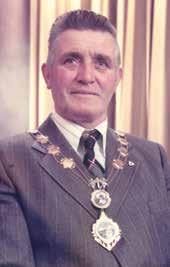
However by the 1960s the system of local government had become synonymous with gerrymandering of electoral boundaries, discrimination in the allocation of public housing and appointments to public sector employment. Eligibility to vote in local elections continued to be based on certain practices abandoned in the rest of the United Kingdom since 1946, i.e. the franchise was based on the ratepayer suffrage and the company vote.
Ratepayer suffrage meant that, with some exceptions, only those who were owners or tenants of a dwelling (or their spouses) were entitled to vote in local government elections. Thus lodgers and grown up children still living with parents had no vote. In addition some large property owners had more than one vote. In 1967 while there were 909,842 voters on the parliamentary electoral register, there were only 694,483 on the local government register.
By the mid-1960s a succession of groups had emerged urging reform of the political system calling for “One Man One Vote”. As the Civil Rights movement became more vocal in its demands traditional communal
tensions escalated and by 1969 Northern Ireland witnessed the breakdown of law and order as the two communities clashed. In this environment the much needed reform of local government was delayed until 1973. A wide ranging report by Sir Patrick Macrory in 1970 advocated a major overhaul with 26 district councils replacing the existing structures. The first election to these new bodies took place in May 1973 with the franchise widened to embrace universal adult suffrage.
These new councils which replaced the former complex local authority structure found their responsibilities drastically limited. Their functions were reduced to little more than the emptying of bins, the burying of the dead and the administration of community and leisure centres.
John McAteer was the first Chairman of Newry and Mourne District Council, and was an Independent Councillor for Crotlieve.
Newry and Mourne District Council
The Only Female Chairperson of Newry
 and
and
Mourne District Council
Josephine O’Hare
I was elected in May 1993 to Newry and Mourne District Council and served as an SDLP Councillor for Crotlieve until 2010. For the first eight years, I was the only female Councillor, and it took four years of constant correction to get Council to address the Chamber as ‘Councillors’, and not ‘gentlemen’. Though, even then, it was often ‘Councillors and Mrs O’Hare’.
Serving as a Councillor during the Troubles had its challenges. There was also a stage when a number of SDLP Councillors received bomb threats. We cut down the bushes around our house, and the Northern Ireland Office put in sensor lights and gave me a device for checking if there was a bomb under my car. I was also sent a bullet with a sympathy card, and I got threatening phone calls in the middle of the night.
In 1999 I was elected Chairperson of Newry and Mourne District Council. It was a very busy year as it incorporated part of the Millennium year, but I found it very interesting and I enjoyed meeting people. It never failed to surprise me, that when I turned up for an event, people expected a male, rather than a female Chairperson.
Local government can also be very parochial. If you wanted something for your area, you had to first persuade your party colleagues, and then the other parties to support your project. One of the projects I lobbied for was the extension and refurbishment of our youth community centre in Mayobridge. Between grant aid and Council support we raised £350,000 to extend and refurbish it. So there are times when you are supporting a project that benefits the whole Council and other times you were fighting tooth and nail for your own electoral area.
Looking back, it was a privilege to represent people, because a vote to me is a very precious thing and so many people in the world don’t have it. If someone gives you a vote, the very least you can do is to represent them to the best of your ability.
I’m very proud of the fact that at the last election, 40% of the SDLP candidates fielded were female. Politics can be difficult for women particularly if you have a young family, and society is still not that open to women going out there and doing what a man does.
Josephine O’Hare, Vice Chairperson of Newry and Mourne District Council at the launch of the annual Kilbroney Vintage Rally in 1998. Newry and Mourne District Council
A Councillor with thirty years continuous service with Newry and Mourne District Council
 Brendan Curran
Brendan Curran
I am now an Independent Councillor, but I was first elected in 1985 as one of three Sinn Féin Councillors in Newry and Mourne District Council. This was the first time that Sinn Féin had contested local government elections in the North of Ireland.
At the time, it was a dilemma for me whether or not to stand for election, as I was about to get married and had secured a job with Council. This was an achievement for me. As a former Republican prisoner recently released from prison, jobs were hard to get.
I was approached by the Republican movement and asked to represent them. I was also interested in a number of local issues such as housing and improving run down areas of the town, so my campaign must have struck a chord with voters as I got elected. The electoral count was in Newry Town Hall and when I was elected I was raised above supporters’ heads and carried down the main stairs. This was a historic moment, as there had not been a Sinn Féin representative for the town of Newry since 1922 when Newry Urban District Council was dissolved after Partition.
I had to give up my job, because you couldn’t be a Councillor and work for the Council at the same time.
I sat in Council with two other Sinn Féin colleagues, who represented electoral wards in south Armagh.
I remember there was great opposition to Sinn Féin in local government at this time, mainly as part of a wider Unionist campaign. Many of the issues we raised, or projects we lobbied for, were blocked because of the party we represented. So my passage in the Council hasn’t been at all easy and it has been very frustrating and at times very dangerous for my family and I, simply because of who I was, and my politics and background.
In 1998 I became the first Sinn Féin Chairman of Council, and I saw this as a sign of equality. Some people embraced my term of office whilst others blocked it, but it gave me a window into other people’s lives to where people of different political viewpoints were coming from.
I am retiring as a Councillor in March 2015 and in retrospect I have found my journey as a Councillor a very interesting one, it has been rewarding and I personally got a buzz out of helping my electorate.
Brendan Curran, Chairman of Newry and Mourne District Council, at a function in 1998. Newry and Mourne District Council
Acknowledgements
Thanks are due to the staff and volunteers of Newry and Mourne Museum for their assistance in this exhibition and accompanying booklet:
Declan Carroll
Joanne Cummins
Jackie Dodds
Caroline Hegerty
Conor Keenan
David Kilner
Greg McAteer
Amanda McKinstry
Shane McGivern
Anna Savage
Dympna Tumilty
Pauline Walsh
Dr. Robert Whan
We are grateful to those who contributed articles to this booklet.
Thanks also to the Northern Ireland Museums Council for the funds to conserve artefacts used in this exhibition through the Pilot Community Engagement project and to Landfill Communities Fund administered by Ulster Wildlife.
We would also like to extend a special thanks to those who contributed to the exhibition through donations, loans, expertise or memories including:
Catherine Brooks
Brendan Curran
Samuel Donaldson
Desmond Egan
Hilary Halliday
Mr & Mrs D Higgins
Jacinta Higgins
Catherine Hudson
Eamon Larkin
William McAlpine
Jim McCart
Mary McDonald
Mr. & Mrs McDougall
Ray McGonigle
Eileen McParland
Colin Moffett
John Murphy
Josephine O’Hare
Kevin O’Neill
Jack Patterson
Marie Quinn
Cyril E. Stevenson
Rosemary Stretton
Jacqueline Turley
Staff of The Mourne Observer
Staff of The Mourne Outlook
Every effort has been made to correctly attribute photographs used in this booklet and the accompanying exhibition.
Compiled by Noreen Cunningham and Dr. Ken Abraham
Andrew Moffett was first elected in 1977 as Councillor for Newry and Mourne District Council. He served as an Ulster Unionist Councillor for the Fews areas during the late 1970s, 1980s and early 1990s. He was also Chairman in 1991 – 1992. After a short break from public life, he was re-elected. His late father, Stanley Moffett, served as a Councillor for the Damolly Division in Newry No. 1 Rural District Council. Newry and Mourne Museum Collection


all politics cover.indd 3 24/02/2015 14:03



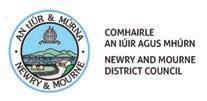

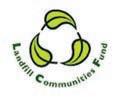

all politics cover.indd 4 24/02/2015 14:03








 and Mourne Museum Collection
Captain Terence O’Neill Prime Minister of Northern Ireland is pictured (left) with W.V. Hogg Chairman of Newry Urban District Council (right) and Jean O’Neill (extreme right) at a luncheon held in their honour in the Ardmore Hotel, Newry during a visit to the town in May 1967. Newry and Mourne Museum Collection
and Mourne Museum Collection
Captain Terence O’Neill Prime Minister of Northern Ireland is pictured (left) with W.V. Hogg Chairman of Newry Urban District Council (right) and Jean O’Neill (extreme right) at a luncheon held in their honour in the Ardmore Hotel, Newry during a visit to the town in May 1967. Newry and Mourne Museum Collection

 John James O’Hagan Chairman of the Newry Town Commissioners in 1868. At the time of his death in 1895, all boats in Newry flew their flags at half mast. Newry and Mourne Museum Collection
John James O’Hagan Chairman of the Newry Town Commissioners in 1868. At the time of his death in 1895, all boats in Newry flew their flags at half mast. Newry and Mourne Museum Collection


 A selection of the mortgages and leases in the Collection. Newry and Mourne Museum
A selection of the mortgages and leases in the Collection. Newry and Mourne Museum

 Hugh John McConville, Chairman of Newry Urban District Council from 1909 – 1922 and from 1929 – 1937. Painted in 1937 by Frank McKelvey. Newry and Mourne District Council
Hugh John McConville, Chairman of Newry Urban District Council from 1909 – 1922 and from 1929 – 1937. Painted in 1937 by Frank McKelvey. Newry and Mourne District Council



 Letter from John Oliver to Paddy O’Hagan accepting an invitation to Mr. W.B. O’Donoghue’s retirement dinner in September 1967. John Oliver was a distinguished Civil Servant who masterminded the beginnings of local government reform in the mid-1960s. Newry and Mourne Museum Collection
Letter from John Oliver to Paddy O’Hagan accepting an invitation to Mr. W.B. O’Donoghue’s retirement dinner in September 1967. John Oliver was a distinguished Civil Servant who masterminded the beginnings of local government reform in the mid-1960s. Newry and Mourne Museum Collection
 Hugh Brooks, a farmer from Jerrettspass, was a Councillor on Newry No. 1. Rural District Council for the Glen Division and served as Chairman from the 1950s until 1964. He also served as a Councillor on Down County Council.
Courtesy of Catherine Brooks
Hugh Brooks, a farmer from Jerrettspass, was a Councillor on Newry No. 1. Rural District Council for the Glen Division and served as Chairman from the 1950s until 1964. He also served as a Councillor on Down County Council.
Courtesy of Catherine Brooks
 Jim McCart
Jim McCart

 Newry and Mourne Museum Collection
Newry and Mourne Museum Collection
 Councillor John Tinnelly (first left) and Desmond Egan (first right), Clerk of South Down Rural District Council, in March 1969. © The Outlook
Councillor John Tinnelly (first left) and Desmond Egan (first right), Clerk of South Down Rural District Council, in March 1969. © The Outlook


 and
and
 Brendan Curran
Brendan Curran









